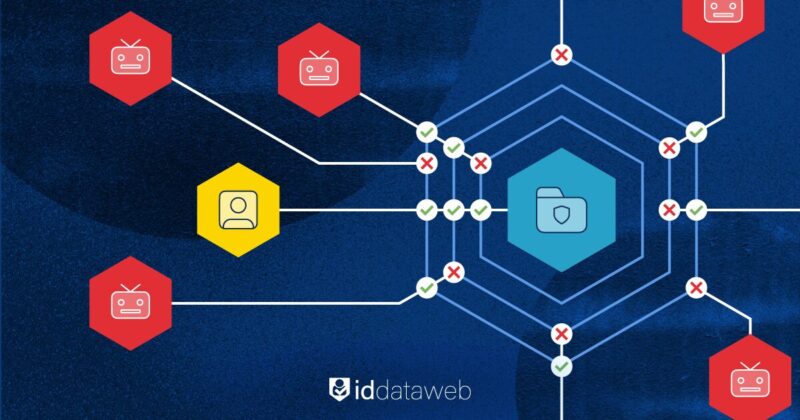In 2025, Identity and Access Management (IAM) is no longer a behind-the-scenes IT function. It has become a strategic pillar in enterprise security. As identity threats surge — and more organizations operate across hybrid, cloud, and multi-cloud environments — modern IAM needs to evolve rapidly.
Here are five trends shaping IAM this year that enterprise security professionals and business leaders should watch closely.
1. AI-driven threat detection
Why it’s trending:
The rise in identity-based attacks — from credential stuffing to session hijacking — has pushed enterprises to rethink their detection strategies. AI-powered Identity Threat Detection and Response (ITDR) is emerging as a critical new layer in the modern identity stack.
What’s happening:
- In 2024, a majority of high-profile breaches involved compromised credentials or session tokens
- Gartner now recognizes ITDR as a formal category, highlighting solutions that detect anomalies in real-time across both user and machine identities.
- AI tools are being used to monitor login behavior, baseline user norms, and flag anomalies — such as privilege escalation attempts or unusual geolocation logins — that would otherwise slip through.
Why it matters in 2025:
AI-driven ITDR allows overburdened security teams to act faster and more precisely. It not only shortens detection times but can also trigger automated responses — like forcing a step-up challenge or suspending access.
For enterprises dealing with identity sprawl and limited SOC bandwidth, AI is no longer optional. It’s how you scale protection without adding headcount.
2. Passwordless authentication is picking up speed
Why it’s trending:
Passkeys and passwordless logins have long been “just around the corner.” Now, adoption is accelerating — and not just for consumers. In 2024, 87% of enterprises surveyed in the US and UK reported piloting or rolling out passkeys internally.
What’s happening:
- Google, Apple, and Microsoft now support passkeys across their platforms.
- Major employers like Target, Hyatt, and IBM deployed passkey-based login flows for workforce access last year.
- Passkeys replace passwords with public-private key pairs tied to user devices — usually secured with biometrics — offering phishing resistance and smoother logins.
Why it matters in 2025:
Beyond better UX, passkeys dramatically reduce the attack surface. They prevent common credential-based threats — from phishing to password reuse — and cut down on IT help desk tickets.
And they’re not just for customer logins. Enterprises are increasingly deploying them across workforce systems and privileged access flows, using mobile device biometrics or secure hardware tokens for step-up auth. It’s becoming a new standard for strong, smooth authentication.
3. Decentralized identity is being tested in enterprise pilots
Why it’s trending:
Decentralized identity (DID) and verifiable credentials (VCs) give users more control over their identity data — while reducing the need for central identity providers in cross-org scenarios.
What’s happening:
- Microsoft’s Entra Verified ID and similar platforms are offering DID-based tools for B2B use cases like vendor verification and academic credentials.
- Gartner’s 2024 IAM guidance advises CISOs to prepare for decentralized trust models as government-issued digital IDs and wallets expand in the US and EU.
- W3C and the Decentralized Identity Foundation have released technical standards now being tested by banks, logistics firms, and universities.
Why it matters in 2025:
Decentralized identity shifts control of sensitive data from centralized directories to the end user, reducing liability while improving privacy. Enterprises that rely on a large contractor or partner ecosystem — or that face evolving compliance requirements (e.g. GDPR, CCPA) — are beginning to explore DID for its portability and zero-trust-aligned architecture.
This year, more companies will move from watching the standard to piloting it. The immediate use cases? Instant contractor onboarding, supplier verification, and privacy-respecting customer interactions.
4. IAM is entering its post-quantum planning phase
Why it’s trending:
Quantum computing is still years away from breaking modern cryptography — but the risk of “harvest now, decrypt later” attacks is real. In response, security leaders are starting to audit IAM systems for quantum-vulnerable protocols and prepare for cryptographic migration.
What’s happening:
- In 2024, NIST published its first post-quantum cryptography (PQC) standards, including algorithms like CRYSTALS-Dilithium and SPHINCS+ for digital signatures.
- The U.S. government passed the Quantum Computing Cybersecurity Preparedness Act, requiring federal agencies to begin planning migrations.
- IAM vendors are beginning to roll out crypto-agile architectures — allowing systems to swap between classical and post-quantum algorithms with minimal disruption.
Why it matters in 2025:
IAM systems are full of cryptographic dependencies: smartcards, SAML tokens, OAuth assertions, PKI certificates. If even one component can be cracked by a quantum attacker, the whole chain becomes vulnerable.
Forward-looking CISOs are pressing vendors on PQ-readiness and beginning internal audits. The message: quantum-safe IAM isn’t urgent, but it is inevitable — and the earlier you start, the smoother the migration will be.
5. Identity solutions are addressing multi-cloud challenges
Why it’s trending:
Hybrid and multi-cloud environments are now the default. But IAM tools are often fragmented — with overlapping systems, inconsistent policies, and gaps in visibility. Identity fabrics offer a way to unify identity across cloud, SaaS, and on-premise systems without rearchitecting everything.
What’s happening:
- Cloud Security Alliance’s 2024 report on IAM found that 71% of enterprises struggle to apply modern SSO and MFA to legacy apps.
- “Identity fabric” vendors now offer orchestration layers that connect disparate identity systems and enforce consistent policies across environments.
- Key features include directory bridging (e.g., connecting AD with modern IdPs), policy-based orchestration, and real-time visibility into identity activity across domains.
Why it matters in 2025:
Identity fabric platforms give enterprises a way to modernize IAM incrementally — without lifting and shifting every legacy system. They also future-proof the stack by making it easier to plug in new identity providers, compliance controls, or authentication methods without ripping out old ones.
The end result: simplified access governance, fewer security gaps, and a faster path to modern authentication — all while bridging the old with the new.











